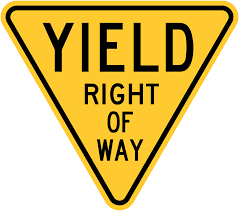This report is not a personal recommendation and does not take into account your personal circumstances or appetite for risk.
Bargain-hunters are out in force, scouring the 20% of UK 100 shares which are now down 20-50% from their 2018 highs. While these big drops offer the opportunity for share price recovery, their dividends also offer the potential for inflation-busting income of up to 14% which, itself, is often supportive of the share price.
 As things stand, a decent 43% of UK 100 blue-chips (and 25% of the for that matter) offer income-seeking investors an estimated 2019 dividend yield of more than 5%. I’m looking at 2019 as it takes into account the fact that; 1) a lot of the 2018 dividend may have already been paid, and, 2) If the expected 2019 yield is much lower than 2018, then at least we are taking into account the drop, not flattering our observation. After all, markets look forward, pricing in the value of future earnings, not just focusing on the current year.
As things stand, a decent 43% of UK 100 blue-chips (and 25% of the for that matter) offer income-seeking investors an estimated 2019 dividend yield of more than 5%. I’m looking at 2019 as it takes into account the fact that; 1) a lot of the 2018 dividend may have already been paid, and, 2) If the expected 2019 yield is much lower than 2018, then at least we are taking into account the drop, not flattering our observation. After all, markets look forward, pricing in the value of future earnings, not just focusing on the current year.
The Bank of England may well have raised UK interest rates again but we are still only at 0.75%. Nothing to write home about when the banks will only offer you 1.4% in return for easy access to your cash savings. You only get 2-3% if you are prepared to lock it up for 2-5years. With UK inflation running at 2.5%, consumer prices are thus rising faster than bank interest. A negative real yield. Your cash is losing value. With dividends of 5%+ in plentiful supply, is it any wonder investors are looking at UK shares offering many multiples more than those oh so generous high street banks and building societies.
Taking a closer look at the breakdown of the yields on offer, I’m probably even understating the situation. Using current share prices and broker/analyst estimates for 2019 dividends, one UK 100 component offers a 2019 forecast yield of nearly 15% (not a typo); another 2 offer circa 10%; there are 8 offering 7-9%, and 31 potentially paying 5-7%. That’s 43% of the UK 100 paying between 2.5x and 7x more than the banks. In fact, with broker consensus suggesting over 94% of the UK 100 paying 2019 income of more than 1.4%, you’d be pretty unlucky if you randomly picked a UK Index stock that didn’t easily beat the high street rate for cash on deposit.

Now the UK Index ’s estimated yields have almost certainly been boosted by the index having fallen by almost 6% this year. If dividend expectations remain unchanged but the share price falls, dividing the latter into the former produces a bigger yield. The payment is income for owning part of the company but it is also a reward for taking the risk for investing. Similarly, if the share price rallies the implied yield falls. But, assuming the dividend is indeed paid, your yield is calculated on the price you buy the shares at. The lower you buy, the bigger the yield.
If you are a long-term investor, assuming dividend pay-outs keep growing, you may even be able to lock-in an greater bigger yield. It’s not like a bond where the yearly returns are fixed. If a company makes more and more profit, it may be in a position to pay higher dividends. If it does really well it might even return all the excess cash to shareholders via a special dividend. At the same time, when a company does well, year in year out, its share price tends to benefit: a double-whammy benefit of share price rise and dividend. Result!
In order to be balanced, dividends are never nailed on. Even big companies face unforeseen circumstances that force them to reduce/suspend/cut often very stable pay-outs. BP had to after its Gulf of Mexico disaster in 2010. The Banks had to amid the 2008 financial crisis. The Miners had a China-inspired downturn in 2015-16. Others have been forced to after profits warnings or major company/industry shocks. Why? To preserve cash. Which usually results in a share price fall that could put you at a paper loss, as traders factor in the loss of future income and the business risk. Equities aren’t without risk and neither is dividend investing. Thankfully, examples like these are rare and there are ways to mitigate the risk.
Firstly, Diversification. Certain sectors may well offer very attractive dividend yields, but if trouble strikes at one company the rest of the sector can quickly be tarred with the same brush. Spreading your exposure across multiple sectors can protect from such contagion. Secondly, forward or estimated yields are more important than historical. You can’t buy past dividends and there’s no guarantee that a company will pay-out the same again (we touched on this earlier, why, half way through 2018, I’m already looking at 2019). Last year’s yield may have been artificially inflated by a special dividend. Be wary of big changes in yield from one year to the next. Some investors look forward one year, others two or three, looking for a stable/gradually rising yield that suggests stable/rising dividends.
Thirdly, share price trends are very important. A very attractive yield might simply be due to the share price having fallen significantly, because investors are concerned about “trouble-at-t-mil”. What if they are correct? As I said earlier, there is no guarantee that a dividend will ever be paid. Lastly, there are financial ratios to help you filter for dividends considered safer than others, those less likely to be cut even when times are hard. There is still no absolute certainty, but it’s another tool for your trading toolbox to boost your confidence and help you steer clear of the dividends most at risk – an additional layer of confidence to your investment and trading decisions; short-term homework for long-term peace of mind.

With 20% of the UK 100 suggesting 2019 dividend cover of 1.5x or less, not all big UK name dividends are safe as houses. Cover ranges from a weak 0.9x to an impressive 16.8x. However, with almost 60% of the index suggesting dividend cover of 2x or better (17% at 3x or more) there is a handsome selection of candidates on offer. Coupled with 43% of the index yielding 5%+ and 22% of prices down by 20-30%, could we be set for a rush into shares offering the chance of share price recovery and generous yields which are easily covered by profits?
I have, thus far, avoided mentioning any individual shares, so it’s time to reveal (da, da, da) that the biggest 2019 estimated dividend yields on the UK 100 are Rightmove, Taylor Wimpey, Persimmon, Direct Line and Micro Focus. The biggest dividend covers are Shire, Just Eat, NMC Health, Ashtead and Ferguson. And the biggest fallers for 2018 are Micro Focus, Fresnillo, Randgold Resources, Antofagasta and Vodafone. Some trends and some overlap, but that’s only half the story. For the full data set click here, so you can do your own homework, choose the best stocks for you and, benefit from our renowned award-winning research and helpful trading analysis.
Enjoy your weekend,
Mike van Dulken, Head of Research, 7 Sept 2018
This research is produced by Accendo Markets Limited. Research produced and disseminated by Accendo Markets is classified as non-independent research, and is therefore a marketing communication. This investment research has not been prepared in accordance with legal requirements designed to promote its independence and it is not subject to the prohibition on dealing ahead of the dissemination of investment research. This research does not constitute a personal recommendation or offer to enter into a transaction or an investment, and is produced and distributed for information purposes only.
Accendo Markets considers opinions and information contained within the research to be valid when published, and gives no warranty as to the investments referred to in this material. The income from the investments referred to may go down as well as up, and investors may realise losses on investments. The past performance of a particular investment is not necessarily a guide to its future performance.
Prepared by Michael van Dulken, Head of ResearchComments are closed.